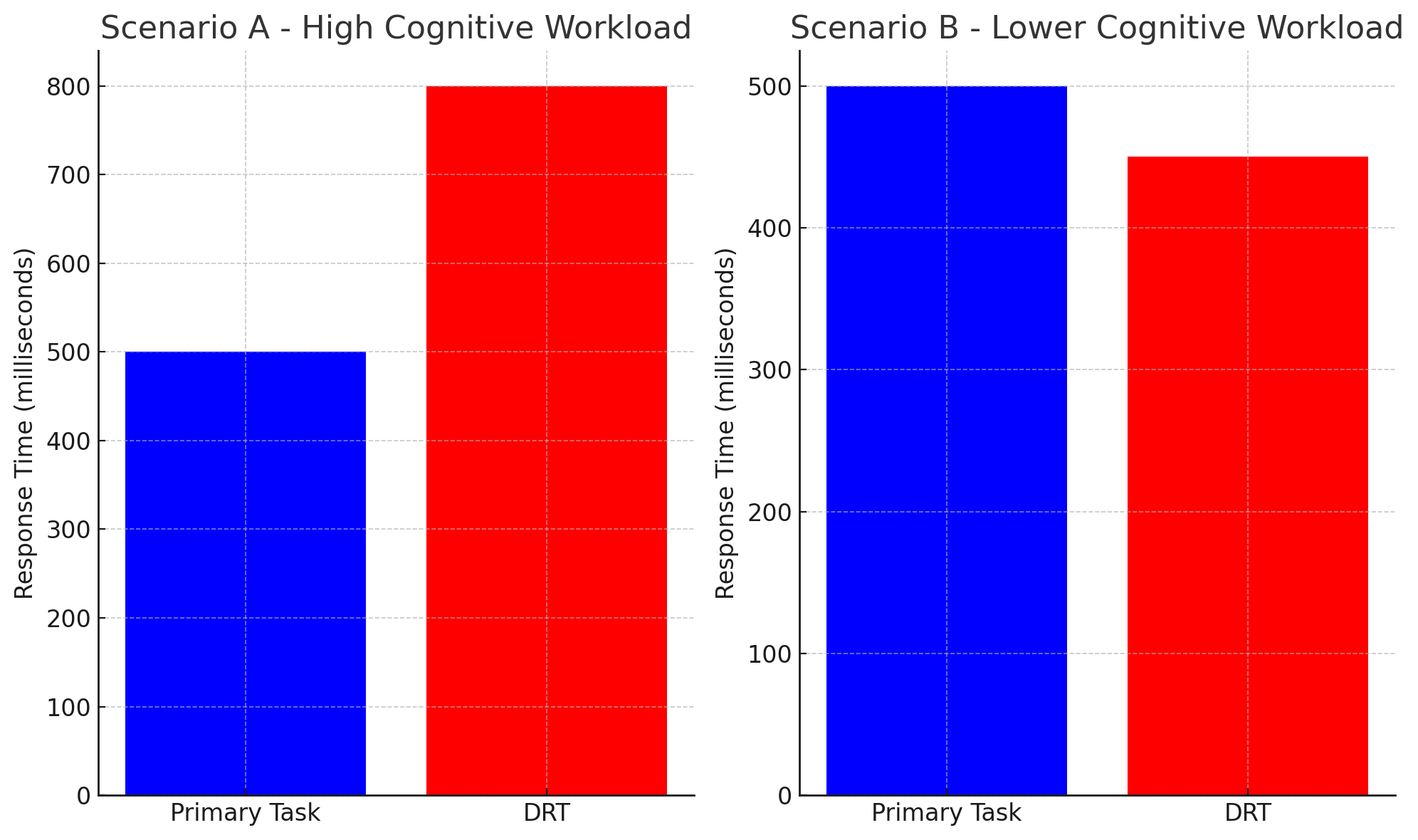Concussion Monitoring: The Role of Detection Response Task (DRT)
DRT evaluates how individuals manage cognitive load and attention after a concussion, yielding critical data.

Concussions, commonly resulting from sports injuries, accidents, or falls, can significantly impair cognitive functions, impacting an individual's memory, attention, and decision-making abilities. Accurately assessing and monitoring these cognitive changes in the critical period following a concussion is paramount for ensuring a safe and effective recovery process. While traditional methods of assessment are useful, they often fall short in capturing the nuanced effects of a concussion on cognitive functions.
The Detection Response Task (DRT) stands out as a dynamic and precise tool for evaluating attentional capacity and cognitive fatigue in individuals post-concussion. Distinct from conventional cognitive tests, the DRT provides objective data, offering a comprehensive view of an individual's cognitive capabilities. This approach allows for a deeper and more accurate understanding of their cognitive state following an injury.
In this article, we explore the intricate mechanics of the Detection Response Task (DRT), its superior advantages over traditional cognitive assessment methods, and its vital role in concussion monitoring. By harnessing the cognitive data obtained from DRT, healthcare professionals can craft more personalized and effective recovery strategies for individuals affected by concussions.
Understanding Concussions and Cognitive Impairment
Concussions, classified as a type of mild traumatic brain injury, can result in a range of cognitive impairments. These may include short-term memory loss, concentration difficulties, and mental fatigue. Although these impairments are often temporary, they can profoundly impact an individual's daily life and long-term well-being. Following a concussion, the brain embarks on a complex recovery process. This phase demands meticulous monitoring to guarantee a safe and complete return to everyday activities.
The primary challenge in managing concussions is the accurate assessment of the extent and nature of cognitive impairment. While traditional cognitive tests, including memory recall or problem-solving tasks, yield valuable insights, they may not fully encompass the dynamic changes that occur in the brain post-concussion. This gap in assessment poses significant risks; it can lead to a premature return to activities, heightening the risk of further injury, or it might result in overly restrictive measures that hinder the recovery process.
In this scenario, the Detection Response Task (DRT) emerges as an indispensable tool, providing a nuanced and real-time perspective on cognitive functioning. DRT evaluates how individuals manage cognitive load and attention after a concussion, yielding critical data. This information is key in informing and refining recovery strategies, ensuring they are tailored to the individual's specific cognitive needs
Detection Response Task (DRT)
The Detection Response Task (DRT) stands as an innovative tool in cognitive assessment, specifically designed to measure the extent of attention resources an individual dedicates to a primary cognitive task. At its heart, DRT employs a dual-task methodology, evaluating an individual's ability to efficiently handle a primary task while concurrently responding to a secondary, unexpected stimulus
Here's how DRT works: During the Detection Response Task (DRT), an individual is involved in a standard cognitive task. At unpredictable intervals, a secondary stimulus, often a visual cue such as a red dot, is presented unexpectedly. The individual's challenge is to respond to this stimulus swiftly and accurately, all while maintaining their concentration on the primary cognitive task at hand.
The true genius of the Detection Response Task (DRT) lies in its straightforward design and its capacity to deliver immediate, measurable data on cognitive function. The reaction speed to the secondary stimulus provides direct insight into the degree of attentional resources absorbed by the cognitive task at hand. In the realm of concussion monitoring, DRT stands out as a potent instrument, offering objective data crucial for assessing an individual's cognitive recovery and their ability to manage cognitive tasks.
By necessitating a response to a secondary stimulus while engaging in a primary task, DRT serves as an effective measure of an individual's attentional capacity and multitasking abilities, both commonly impacted by concussions. Furthermore, the sensitivity of DRT to even minor alterations in response times renders it exceptionally valuable in tracking the subtle cognitive effects that may persist after a concussion.
Adaptability is another key attribute of DRT. Through Soma Analytics, DRT can be tailored and applied to various cognitive tasks, making it an ideal tool for monitoring an individual's recovery progress over time.
Interpreting DRT Results
Interpreting the results of the Detection Response Task (DRT) is crucial in assessing cognitive load, particularly in the context of recovering from a concussion. This process entails a comparative analysis of an individual's response times to both the primary task and the secondary stimulus (DRT), providing key insights into their cognitive functioning. Let's delve into how this interpretation unfolds:
- Slower Response to DRT: A slower reaction time to the DRT stimulus, as compared to the primary task, suggests that the cognitive task is consuming a significant portion of the individual's attentional resources. This is indicative of a high cognitive workload. In the context of concussion monitoring, such a result is especially significant as it may indicate persistent cognitive challenges or fatigue.
- Faster Response to DRT: On the other hand, a quicker reaction to the DRT stimulus than to the primary task implies that the cognitive task is less demanding on their attentional resources, suggesting a lower cognitive workload. This scenario could signal a positive progression in concussion recovery, demonstrating the individual's improving ability to efficiently process and respond to multiple stimuli.

These insights gleaned from DRT results are invaluable for understanding an individual's cognitive effort and capacity, especially after a concussion. This information is instrumental in guiding recovery and rehabilitation strategies, ensuring that cognitive exercises and activities are appropriately aligned with the individual's current cognitive abilities and the trajectory of their recovery.
Examples for Context:
Let's consider two scenarios to illustrate how DRT results can be interpreted in the context of concussion recovery:
Scenario A: An athlete recovering from a concussion takes longer to respond to the DRT stimulus compared to their usual performance on the primary task. This indicates a higher cognitive workload, suggesting that the concussion has significantly impacted their cognitive function. Such data signals the need for a careful, gradual approach to cognitive tasks during recovery.
Scenario B: Another athlete shows only a slight delay in their DRT response relative to the primary task. This implies a lower cognitive workload, indicating a lesser impact on cognitive function and potentially a more advanced stage of recovery.
Adjusting Training Based on DRT Insights:
DRT insights can be pivotal in adjusting training and recovery plans for athletes post-concussion. For instance:
- If DRT results show a significant delay in response, it suggests a high cognitive workload and potential cognitive fatigue. In this case, training plans might be adjusted to include lighter cognitive tasks or more rest periods to avoid overloading the brain during recovery.
- Conversely, if DRT results indicate a minimal impact on cognitive function, training intensity can be safely increased, introducing more challenging cognitive tasks to stimulate recovery.
Such tailored adjustments ensure that recovery plans are aligned with the individual's current cognitive capabilities, promoting a safer and more efficient return to peak performance.
Monitoring Progress and Task Selection:
DRT also plays a crucial role in monitoring an athlete's recovery progress over time. By regularly assessing cognitive load through DRT, healthcare providers can track improvements in cognitive function, making informed decisions about the athlete's readiness to progress to more demanding tasks or return to full activity.
Moreover, DRT assists in selecting appropriate cognitive tasks during different stages of recovery. Tasks can be chosen based on the cognitive load they impose, ensuring that they are challenging enough to promote recovery but not so demanding as to risk further injury.
Concussion Recovery with the Detection Response Task
The Detection Response Task (DRT) represents a significant leap forward in the realm of concussion management. By offering a nuanced and real-time analysis of cognitive function, DRT provides essential insights that are crucial for tailoring recovery strategies to individual needs. The ability to interpret subtle changes in cognitive workload through DRT allows healthcare professionals to make informed decisions, ensuring that recovery plans are both safe and effective.
Through the practical application of DRT, from adjusting training regimens to selecting appropriate cognitive tasks, we can ensure a more personalized and efficient recovery process for individuals recovering from concussions. The adaptability of DRT, coupled with its capacity to offer objective, real-time data, positions it as an invaluable tool in the journey towards full recovery and optimal cognitive health.
As we continue to explore and utilize the capabilities of the Detection Response Task, its role in enhancing the quality of care in concussion management becomes increasingly evident. By embracing this innovative approach, we can provide better support to those on the challenging path to recovery following a concussion.
Effects of Cognitive Load on Response Time
A broader application of the detection response task
🌐 Connect With Us
🌍 Soma Technologies: Engineered to enhance human performance.
📸 Instagram: Dive into our world through exclusive photos and stories.
👥 Facebook: Join our community for the latest updates and discussions.
📈 LinkedIn: Connect with us professionally and stay informed about industry news.
🎥 YouTube: Watch our latest videos, tutorials.
🐦 X: Follow us for instant updates, news, and engaging tweets.
